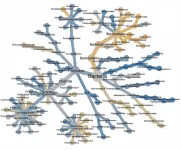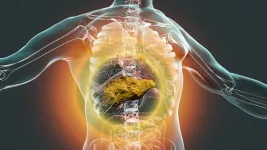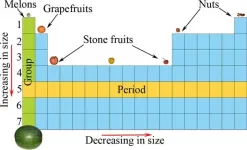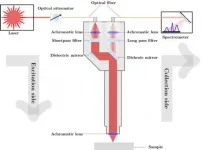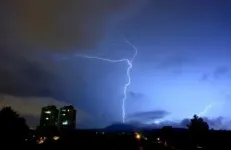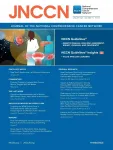(Press-News.org) DURHAM, N.C. -- Biomedical engineers at Duke University have devised an algorithm to remove contaminated microbial genetic information from The Cancer Genome Atlas (TCGA). With a clearer picture of the microbiota living in various organs in both healthy and cancerous states, researchers will now be able to find new biomarkers of disease and better understand how numerous cancers affect the human body.
In the first study using the newly decontaminated dataset, the researchers have already discovered that normal and cancerous organ tissues have a slightly different microbiota composition, that bacteria from these diseased sites can enter the bloodstream, and that this bacterial information could help diagnose cancer and predict patient outcomes.
The results appear online on December 30 in the journal Cell Host & Microbe.
TCGA is a landmark cancer genomics program that molecularly characterized over 20,000 primary cancer and matched healthy samples spanning 33 cancer types. It has produced more than 2.5 million gigabytes of "omic" data. The atlas includes which DNA is present, what epigenetic markers are on the DNA, which DNA is turned on and which proteins are being produced. It is freely available for public use.
One study from the atlas data revealed an abundance of Fusobacterium nucleatum in colorectal cancer, which has since been shown to be indicative of stage, survival, metastasis and even drug responses of this kind of cancer.
Many more studies have searched for such bacterial biomarkers, however few have been discovered. A large reason for this is contamination. When bacteria get introduced into the samples accidentally by the laboratories, it becomes difficult to discern which species were actually in the samples to begin with. While similar microbiome studies using microbe-rich material such as feces can overcome small amounts of contamination, the relatively miniscule samples taken from live human organs and tumor samples cannot.
When examining a subset of TCGA sequencing data, previous analyses found that microbial DNA from a number of species was the result of lab contamination.
"All microbiota studies are plagued by the notion that if you find a microbe, was it really in the tissue or was it contamination introduced during processing?" said Xiling Shen, the Hawkins Family Associate Professor of Biomedical Engineering at Duke. "We've invented a method that can extract the microbes that were truly in each sample and used it to build what we've called The Cancer Microbiome Atlas, which will be a tremendous resource for the community and allow us to understand how cancer alters an organ's microbiome."
The method for removing contamination from TCGA data was invented by Anders Dohlman, a graduate student in Shen's laboratory. Dohlman first compared the microbiome signatures between cancer tissues from different organs and blood, and ruled out contaminant species that showed up indiscriminately. He then compared the microbiome signatures of identical samples that were processed at separate sites, ranging from Harvard to Baylor. Dohlman concluded that the microbial species that can only be detected from a specific site would be the contaminants, allowing him to assign a unique contamination signature for each site.
"A big challenge in this process was mixed-evidence species, which are bacteria that are both a contaminant and endogenous to the tissue," said Dohlman. "But because TCGA has so many different types of data, we were able to tease it out. Big data really helps!"
The effort is already paying dividends in a variety of ways. After using Dohlman's decontamination algorithm, the researchers took a close look at the microbiota signatures of samples taken from colorectal cancer patients. They discovered two unique groups of bacteria frequently found together, one of which appears to be associated with patient survival.
The researchers also discovered that some cancers do indeed alter the microbiome of their resident organs. It might be, Shen reasons, that tumors alter an organ's microenvironment, making it more or less hospitable to different microbial species. And by looking for microbial signatures within patient blood samples, they also found that, despite conventional wisdom to the contrary, some bacteria does find its way into the bloodstream, which could also provide an indication of a cancer's progress.
"There has been a sort of crisis in the field about whether or not high-profile papers can be reproduced, owing to the challenge of contamination," said Shen. "For example, while one center would be able to reproduce its results, another center would not. This explains why: Each center has its own very consistent bias. (Its own resident microbe contaminants.) In the future, new studies can use our method to remove this bias and reproduce results, and research centers might be able to use their bias we've identified to mitigate their contamination."
INFORMATION:
This research was supported by the National Institutes of Health (R35GM122465, DK119795) and the Defense Advanced Research Projects Agency (W911NF1920111).
CITATION: "The Cancer Microbiome Atlas: A Pan-Cancer Comparative Analysis to Distinguish Tissue-Resident Microbiota from Contaminants." Anders B. Dohlman, Diana Arguijo Mendoza, Shengli Ding, Michael Gao, Holly Dressman, Iliyan D. Iliev, Steven M. Lipkin, Xiling Shen. Cell Host & Microbe, 2021. DOI: 10.1016/j.chom.2020.12.001
Liver transplant priority in the U.S. goes to the sickest patients, which fails to consider other important factors, including how long patients are likely to survive post-transplant.
Researchers with Sylvester Comprehensive Cancer Center at the University of Miami Miller School of Medicine are collaborating with faculty at the University of Pennsylvania to develop a risk score that more comprehensively prioritizes liver cancer patients for transplantation.
Their paper documenting the development and validation of the LiTES-HCC score to predict post-transplant survival for hepatocellular carcinoma, or liver cancer, patients was published in the highly respected peer-reviewed Journal of Hepatology.
The ...
Egg cells are among the largest cells in the animal kingdom. If moved only by the random jostlings of water molecules, a protein could take hours or even days to drift from one side of a forming egg cell to the other. Luckily, nature has developed a faster way: cell-spanning whirlpools in the immature egg cells of animals such as mice, zebrafish and fruit flies. These vortices enable cross-cell commutes that take just a fraction of the time. But until now, scientists didn't know how these crucial flows formed.
Using mathematical modeling, researchers now have an answer. The gyres result from the collective behavior of rodlike molecular ...
Many students, especially non-science majors, dread chemistry. The first lesson in an introductory chemistry course typically deals with how to interpret the periodic table of elements, but its complexity can be overwhelming to students with little or no previous exposure. Now, researchers reporting in ACS' Journal of Chemical Education introduce an innovative way to make learning about the elements much more approachable -- by using "pseudo" periodic tables filled with superheroes, foods and apps.
One of the fundamental topics taught in first-year undergraduate chemistry courses is ...
WASHINGTON -- In a new study, researchers show that a light-based analytical technique known as Raman spectroscopy could aid in early detection of oral squamous cell carcinoma (OSCC).
OSCC is the most prevalent type of oral cancer and ranks among the most common cancers diagnosed worldwide. Although effective treatments are available, the cancer is often not detected until a late stage, resulting in overall poor prognosis.
"Raman spectroscopy is not only label-free and non-invasive, but it can potentially be used in ambient light conditions," says research team leader Levi Matthies from University Medical Center Hamburg-Eppendorf in Germany. "This makes it promising for use as a potential screening tool ...
Cardiovascular Innovations and Applications, publishes selected abstracts from the 31st Great Wall International Cardiology (GW-ICC) Conference, October 19 - 25, 2020
Beijing, January 13, 2021: Cardiovascular Innovations and Applications (CVIA), in its role as the official journal of the Great Wall International Cardiology Conference (GW-ICC), has published selected abstracts from the 31st GW-ICC. Abstracts are now online at https://www.ingentaconnect.com/content/cscript/cvia/2020/00000005/a00101s1/art00001
Co-Editors-in-Chief of CVIA Dr. C. Richard Conti, past president of the American College of Cardiology, and Dr Jianzeng Dong, Capital Medical University, Beijing, China commented that CVIA is delighted to be ...
Thousands of genetic markers have already been robustly associated with complex human traits, such as Alzheimer's disease, cancer, obesity, or height. To discover these associations, researchers need to compare the genomes of many individuals at millions of genetic locations or markers, and therefore require cost-effective genotyping technologies. A new statistical method, developed by Olivier Delaneau's group at the SIB Swiss Institute of Bioinformatics and the University of Lausanne (UNIL), offers game-changing possibilities. For less than $1 in computational cost, GLIMPSE is able to statistically infer a complete human genome from a very small amount of data. The method offers ...
Researchers at Brazil's National Space Research Institute (INPE), in partnership with colleagues in the United States, United Kingdom and South Africa, have recorded for the first time the formation and branching of luminous structures by lightning strikes.
Analyzing images captured by a super slow motion camera, they discovered why lightning strikes bifurcate and sometimes then form luminous structures interpreted by the human eye as flickers.
The study was supported by São Paulo Research Foundation - FAPESP. An article outlining its results is published in Scientific Reports.
"We managed to obtain the first optical observation of these phenomena and find a possible explanation for branching and flickering," Marcelo Magalhães Fares Saba, ...
Spatial isolation is known to promote speciation - but researchers at Ludwig-Maximilians-Universitaet (LMU) in Munich have now shown that, at least in yeast, the opposite is also true. New ecological variants can also evolve within thoroughly mixed populations.
The idea that speciation is based on the selection of variants that are better adapted to the local environmental conditions is at the heart of Charles Darwin's theory of the origin of species - and it is now known to be a central component of biological evolution, and thus of biodiversity. Geographic isolation of populations is often regarded as a necessary condition for ecotypes to diverge ...
PLYMOUTH MEETING, PA [January 13, 2021] -- New research in the January 2021 issue of JNCCN--Journal of the National Comprehensive Cancer Network finds more than a third of eligible people miss timely screening tests for colorectal cancer and at least a quarter appear to miss timely screening tests for breast and cervical cancers. The study comes from the University of Alberta, Faculty of Medicine and Dentistry in Alberta, Canada, with findings based on self-reported results from the Canadian Community Health Survey (CCHS) from 2007-2016. According to the author, the results also ...
WHAT:
Salmonella enterica serovar Typhimurium bacteria (S. Typhimurium) commonly cause human gastroenteritis, inflammation of the lining of the intestines. The bacteria live inside the gut and can infect the epithelial cells that line its surface. Many studies have shown that Salmonella use a "run-and-tumble" method of short swimming periods (runs) punctuated by tumbles when they randomly change direction, but how they move within the gut is not well understood.
National Institutes of Health scientists and their colleagues believe they have identified a S. Typhimurium protein, McpC ...
